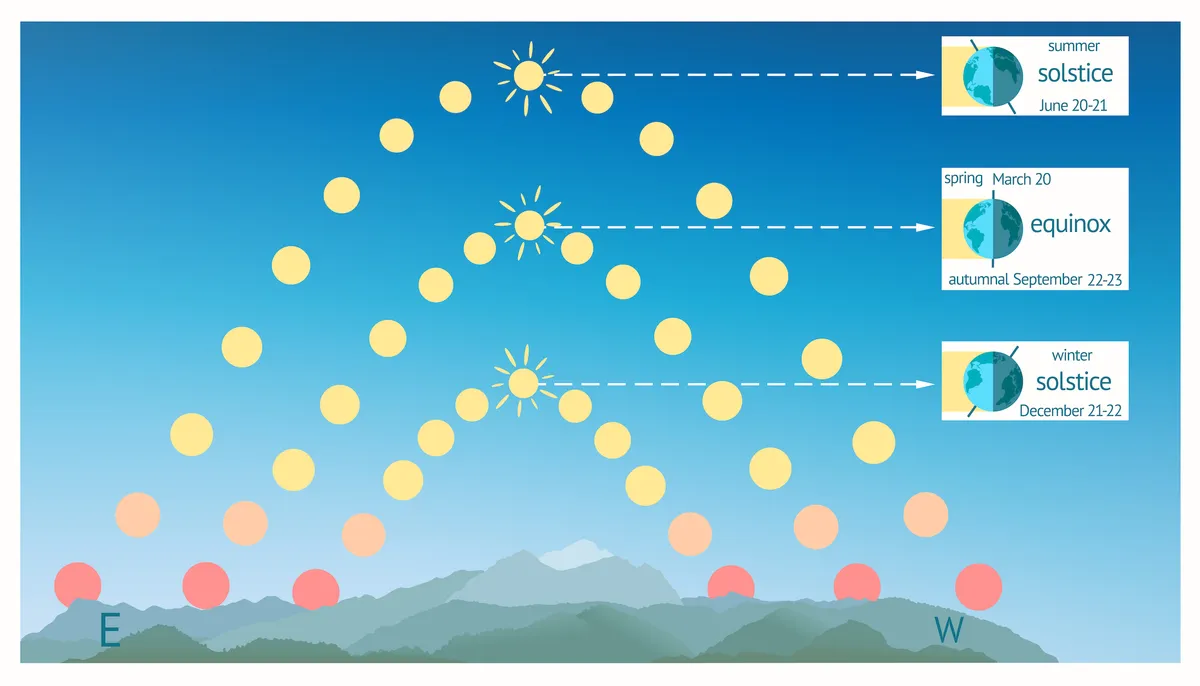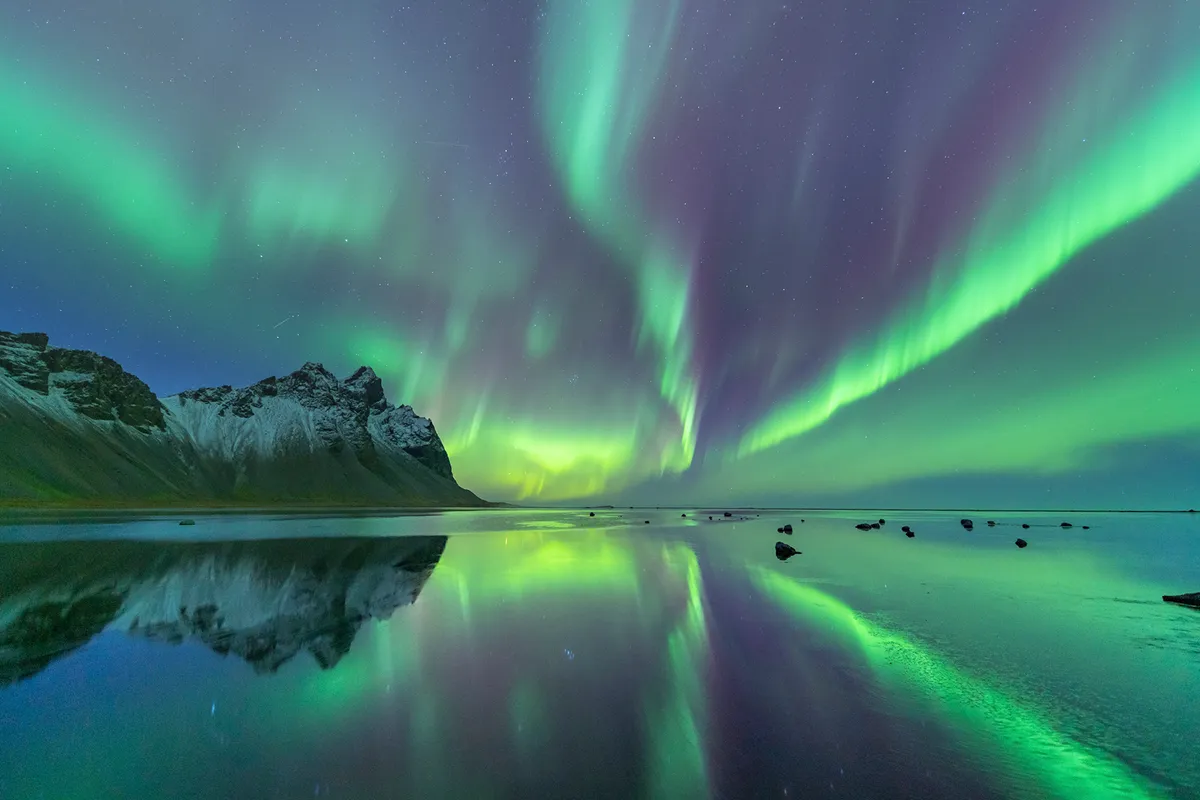As the leaves change and the air begins to feel crisper, the autumn equinox ushers in a change of season. We're halfway between the summer and winter solstices, and just a few days after the equinox we have another astronomical event to look forward to, as Jupiter reaches opposition.
But when exactly is the autumn equinox? And how does it affect the aurorae? Read on for answers to this and more.
For those who missed it, you can check out our fantastic gallery of the best Sturgeon Moon pictures from last month. If you’re looking forward to clear nights this year, why not plan ahead with ourfull Moon UK calendarandastronomy for beginners guide?
When is the autumn equinox 2022?
The autumn equinox 2022 in the northern hemisphere is on Friday 23 September. The autumn equinox marks the first day of astronomical autumn, and the precise time of the autumn equinox in 2022 will be at 3:04am BST.
For the two hemispheres, the equinoxes are opposite each other. When it’s the autumn equinox in the northern hemisphere, it’s the spring equinox in the southern hemisphere. For the purposes of this article, when we refer to the autumn equinox, it is from the perspective of the northern hemisphere, and we are referring to the September equinox, unless stated otherwise.
What is the autumn equinox?
What exactly happens during the autumn equinox? Put simply, the autumn equinox is when the Sun crosses the celestial equator (this being an imaginary line in the sky above Earth’s equator), going from the northern hemisphere to the southern hemisphere. It's caused by the cyclical tilt of Earth's axis, and at the equinoxes, this tilt aligns with the orbit around the Sun.
At the equinoxes, the Sun is exactly above the equator, and both hemispheres receive (nearly) equal amounts of sunlight. In other words, day and night are (almost) equal in both hemispheres. After the autumn equinox, we start to receive more darkness and less daylight.
The word ‘equinox’ derives from the Latin words aequi, meaning ‘equal’, andnox, meaning ‘night’. Taken together, 'equinox' translates as ‘equal night’.

The September equinox denotes the start of astronomical autumn in the northern hemisphere, and the start of spring in the southern hemisphere. From our perspective, the Sun moves to be south of the equator, in the western portion of the constellation Virgo.
At the March equinox (the spring equinox in the northern hemisphere), the Sun crosses the celestial equator again, this time going the other way, from the southern hemisphere to the northern hemisphere.
What happens at the poles?
During the autumnal equinox, the north pole of the Earth begins to tilt away from the Sun, and the south pole begins to tilt towards the Sun. At the south pole, therefore, the autumn equinox marks the end of darkness as the Sun begins to peep over the horizon.
The opposite is true for the north pole. As the Sun sets around the time of the autumnal equinox, this marks the onset of six months of darkness. However, the north pole will not be in complete darkness for all this time; there is a period of twilight at either end of the six months. Total darkness at the north pole begins around the middle of November and lasts until the end of January.
What is the First Point of Libra?
At the spring equinox, the exact point where the Sun crosses the equator is called the 'First Point of Aries'. It's so-called because when Hipparchus first observed the equinoxes back in 130 BC, this point lay in the constellation Aries. Diametrically opposite this on the celestial sphere is the First Point of Libra. For this reason, the Sun at the September equinox is sometimes referred to as entering the First Point of Libra.
It is, however, a rather archaic and outdated term. Thanks to the effects of precession over the subsequent millennia, the First Point of Aries now lies in the neighbouring constellation Pisces, and the First Point of Libra now lies in the constellation Virgo.
What’s the difference between a solstice and an equinox?
The difference between the equinoxes and solstices comes down to length. At the two equinoxes, the days and nights are of almost equal length, whereas the solstices mark the shortest (winter solstice) and longest (summer solstice) days of the year.
At the two equinoxes, the Sun is directly above Earth’s equator. During the summer solstice, the northern hemisphere is at its maximum tilt towards the Sun, so the Sun appears at its highest, giving us the longest day of the year. During the winter solstice, the northern hemisphere reaches its maximum tilt away from the Sun, so the Sun appears at its lowest in the sky, and we get the shortest day of the year.

Why do the dates of the autumn equinox change?
The autumn equinox sometimes falls on different dates because the Earth takes slightly more than 365 days to complete a single orbit around the Sun. If you want to be precise, it takes us 365.25 days to orbit around our star. In the Gregorian calendar, which is still used by most people around the world, we account for this by adding one extra day every four years, to account for the four additional quarters. This is why we have leap years; the extra day essentially moves us backwards by a day.
This means that the September equinox can occur between 21 and 24 September, with around a six-hour difference from the previous year.
Dates and times of the September equinoxes, GMT
2022: 23 September, 2:04am
2023: 23 September, 7:50am
2024: 22 September, 1:43pm
2025: 22 September, 7:19pm
2026: 23 September, 1:05am
2027: 23 September, 7:01am
2028: 22 September, 12:45pm
2029: 22 September, 6:37pm
2030: 23 September, 12:27am
How does the equinox affect the aurorae?
One of the best times to see the Northern Lights is around the equinox. Although there is still much that remains unknown, the aurorae and major geomagnetic storms tend to occur more frequently around the equinoxes.
Like a magnet, both the Earth and the Sun have north and south poles. And like magnets, both have magnetic fields.

The north-south component of the Sun's magnetic field (called the Bz Component) fluctuates throughout the year, in a similar way that the tilt of Earth's axis wobbles, and these fluctuations are greatest during the equinoxes.
It is thought that during the equinoxes, the north-south component of the Sun is more-or-less opposite that of Earth's own magnetic field. This allows the solar wind to flow more easily toward Earth's magnetic poles, giving us the dancing lights we know as aurorae.
Other planets can also experience aurorae; you may have seen the recent image from the James Webb Space Telescope of aurorae on Jupiter.
Read more: